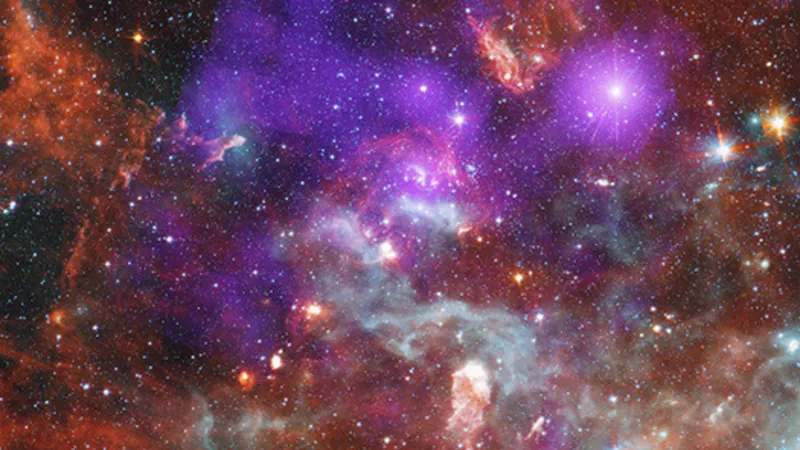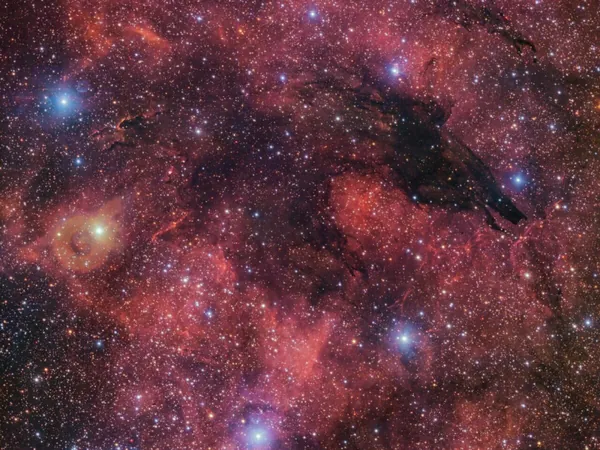
NASA's Chandra X-ray Observatory Uncovers 'Danger Zones' Around Young Stars – What It Means for Planet Formation
2024-11-06
Author: Liam
NASA's Chandra X-ray Observatory, alongside the retired Spitzer Space Telescope, has made a groundbreaking discovery regarding the hazardous environments surrounding young stars, dramatically impacting our understanding of planet formation. This revelation stems from intensive observations of Cygnus OB2, known as the nearest major star cluster to Earth, located a staggering 4,600 light-years away.
Astronomers created a breathtaking mosaic by stitching together images from Chandra, which showcased the high-energy X-ray emissions from the cluster’s brightest young stars. Additionally, they integrated optical and infrared data from Spitzer to compile a thorough architectural survey of this celestial tapestry. The new composite image highlights the interplay between the X-ray emissions (in purple) and the cooler dust and gas (in red, green, blue, and cyan) that permeate Cygnus OB2.
But what’s alarming about these findings? The study reveals that young, massive stars emit potent ultraviolet and X-ray radiation that poses significant threats to forming planets within the dense regions of star clusters. This radiation interacts with the protoplanetary disks—clouds of gas and dust where planets are born—evaporating their materials at an accelerated pace in these 'danger zones.'
To put this into perspective, our own Sun was enveloped by a protoplanetary disk 4.6 billion years ago, which acted as the cradle for the formation of planets, including Earth. However, these disks don't last forever; intense radiation can vaporize the disk, a process astronomers refer to as “photoevaporation.” For average-mass stars, this process typically spans between 5 to 10 million years. Yet, in regions surrounding more massive stars where radiation levels are significantly higher, this time frame decreases drastically.
Research indicates that the effects of radiation are even more cataclysmic in densely populated areas of Cygnus OB2—the ‘danger zones’ identified by scientists. In regions with lower radiation exposure from less massive stars, approximately 40% of young stars still possess their protoplanetary disks. However, as we progress into regions dominated by massive stars and their X-ray emissions, this number plummets to a mere 18%. In the most concentrated sections of Cygnus OB2, where star density peaks, the chances of finding protoplanetary disks drops dramatically to just 1%. This alarming statistic suggests that these areas are virtually inhospitable for future planet formation.
Supplementary research using Chandra's data has further illuminated the situation, indicating that the most intense X-ray emissions in Cygnus OB2 arise from collisions of disk winds—streams of gas expelled from around massive stars. When these winds collide, the resultant pressure heats the gas, triggering X-ray emissions.
These discoveries shed light on the harsher realities of star formation and help astronomers understand why certain regions are fertile grounds for planet development while others render it nearly impossible. As we continue to explore the cosmos, the implications of these 'danger zones' will provoke profound questions about planetary evolution and the fate of newly forming worlds in our universe. Stay tuned, as we unravel more secrets of the stars—because the universe is full of surprises!









 Brasil (PT)
Brasil (PT)
 Canada (EN)
Canada (EN)
 Chile (ES)
Chile (ES)
 España (ES)
España (ES)
 France (FR)
France (FR)
 Hong Kong (EN)
Hong Kong (EN)
 Italia (IT)
Italia (IT)
 日本 (JA)
日本 (JA)
 Magyarország (HU)
Magyarország (HU)
 Norge (NO)
Norge (NO)
 Polska (PL)
Polska (PL)
 Schweiz (DE)
Schweiz (DE)
 Singapore (EN)
Singapore (EN)
 Sverige (SV)
Sverige (SV)
 Suomi (FI)
Suomi (FI)
 Türkiye (TR)
Türkiye (TR)